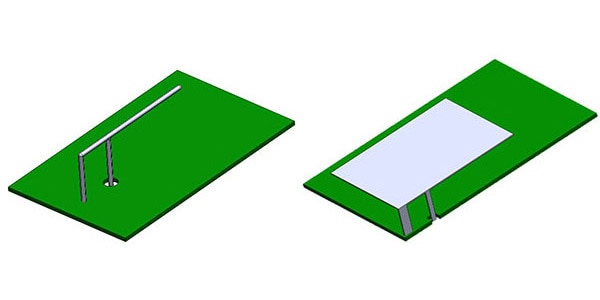Latest GPS/GNSS Antennas Making Centimeter Positioning a Reality
 Figure 1: GNSS. (Image source: Molex)
Figure 1: GNSS. (Image source: Molex)
Global Positioning System (GPS)/Global Navigation Satellite System (GNSS) antennas enable tracking and position finding applications to access GPS/GNSS satellite constellations. They capture the L-band signals transmitted from space and transfer them to a processing unit to pinpoint the location of the receivers. With new signals and frequencies coming in and more applications relying on high-accuracy positioning, GNSS antennas are becoming increasingly important.
GNSS antennas find applications in many markets, but tracking remains the prime application, and precision and accuracy are their critical success factors. There was a time when meter-level accuracy was considered good, but with the new CDNSS technique and improved clock, orbit and atmospheric models, positioning to the centimeter level has become a growing market need. Today, a tracking application user is not happy just to know which lane he/she is driving in; the user also wants to know where in the lane his/her vehicle is located. Fortunately, satellite systems have been deploying and activating new L-band frequencies, such as L-5, that offer centimeter-level accuracy.
DigiKey offers Molex antennas that support L-bands that enable precise L-2 and L-5 frequencies. Additionally, Molex designers stacked high-gain and high-radiation efficiency ceramic patches to develop stacked-patch GNSS antennas that offer superior signal processing and GPS accuracy for high-precision tracking applications and eliminate the need for a separate base station. These antennas operate at L1, L5 and GLONASS frequency bands, providing decimeter-level to sub-meter-level accuracies for geospatial data. This high-precision tracking capability makes them ideal for accurate positioning applications such as UAVs, drones, vehicle safety systems, and real-time kinematics (RTK) systems.
 Figure 2: GNSS Antenna in vehicle navigation system. (Image source: Molex)
Figure 2: GNSS Antenna in vehicle navigation system. (Image source: Molex)
Accuracy, continuity and reliability are the key success factors for the GNSS antennas, and these depend on the antenna’s strength and a few aspects of the application. Therefore, it is important to understand the key parameters in order to find the correct match for your requirement. Four factors to consider while selecting your GNSS antenna are:
- Region/Frequency
- Size
- Material and Form
- Antenna Location
1. Region of operation/frequency of transmission
It may seem obvious, but your antenna needs to operate in an appropriate frequency range for GNSS signals. Different regions use different GNSS systems, such as GPS in the USA and GLONASS in Russia. If your product has a regional focus, it’s best to know the corresponding GNSS system to build around for better accuracy.
 Figure 3: Molex Stacked L1+L5 GPS Ceramic Patch Antenna. (Image source: Molex)
Figure 3: Molex Stacked L1+L5 GPS Ceramic Patch Antenna. (Image source: Molex)
2. Size of the product/antenna
Knowing the size of the product is important because the dimension of the product and its PCB determines where you can place the antenna. The size of the antenna changes its behavior, and poor placement could affect the antenna’s output power, efficiency and directivity.
3. Material and form of the antenna
Ceramic, flexible and various composite antennas are all viable options for GNSS trackers, but the functioning environment and other components in the tracking device influence the choice of material and impact transmission efficiency. For example, for a wearable tracking device, a flexible antenna would be better, and for a rugged application, a metal mount antenna is the wise choice. If the size is a concern, then a miniature antenna would be the best fit, and if an application requires fixed orientation, a high-gain antenna would be the solution. Understand your product design and application to decide the appropriate antenna composition.
 Figure 4: Molex’s compact SMT GPS antenna (high performance LDS version). (Image source: Molex)
Figure 4: Molex’s compact SMT GPS antenna (high performance LDS version). (Image source: Molex)
4. Antenna location
Internal or external? Soldered or connected via cable? Location affects the radiation pattern and efficiency and determines the optimal performance of the system and the user experience. If your antenna is placed on a PCB, make sure to read the antenna’s documentation to understand any additional requirements.
These design and configuration challenges can be simplified by purchasing your antenna from a reputable manufacturer or a distributor who can lend its technical support to help you choose the best fit for your application. DigiKey offers a range of Molex next-generation GNSS antennas in multiple form factors and sizes that deliver superior RF performance with high accuracies for U.S. and global satellite systems.
GNSS Antenna design solutions at Molex
Molex offers engineering resources and industry expertise that afford unparalleled leadership in the communication and navigation system arenas. We deliver solutions that are well suited for current and future requirements, as can be seen in the advances we have made. Visit DigiKey for Molex products, including LDS/MID, ceramic, flexible, Wi-Fi, combo and stacked-patch GNSS antennas. Also consider DigiKey for our IoT, LTE Cellular, LPWAN, NFC, UWB and ISM antennas that represent just a few of our extensive lines of antenna solutions.
 Figure 5: Molex Ceramic GPS antennas can be connected to a PCB with coaxial cable. (Image source: Molex)
Figure 5: Molex Ceramic GPS antennas can be connected to a PCB with coaxial cable. (Image source: Molex)

Have questions or comments? Continue the conversation on TechForum, DigiKey's online community and technical resource.
Visit TechForum











